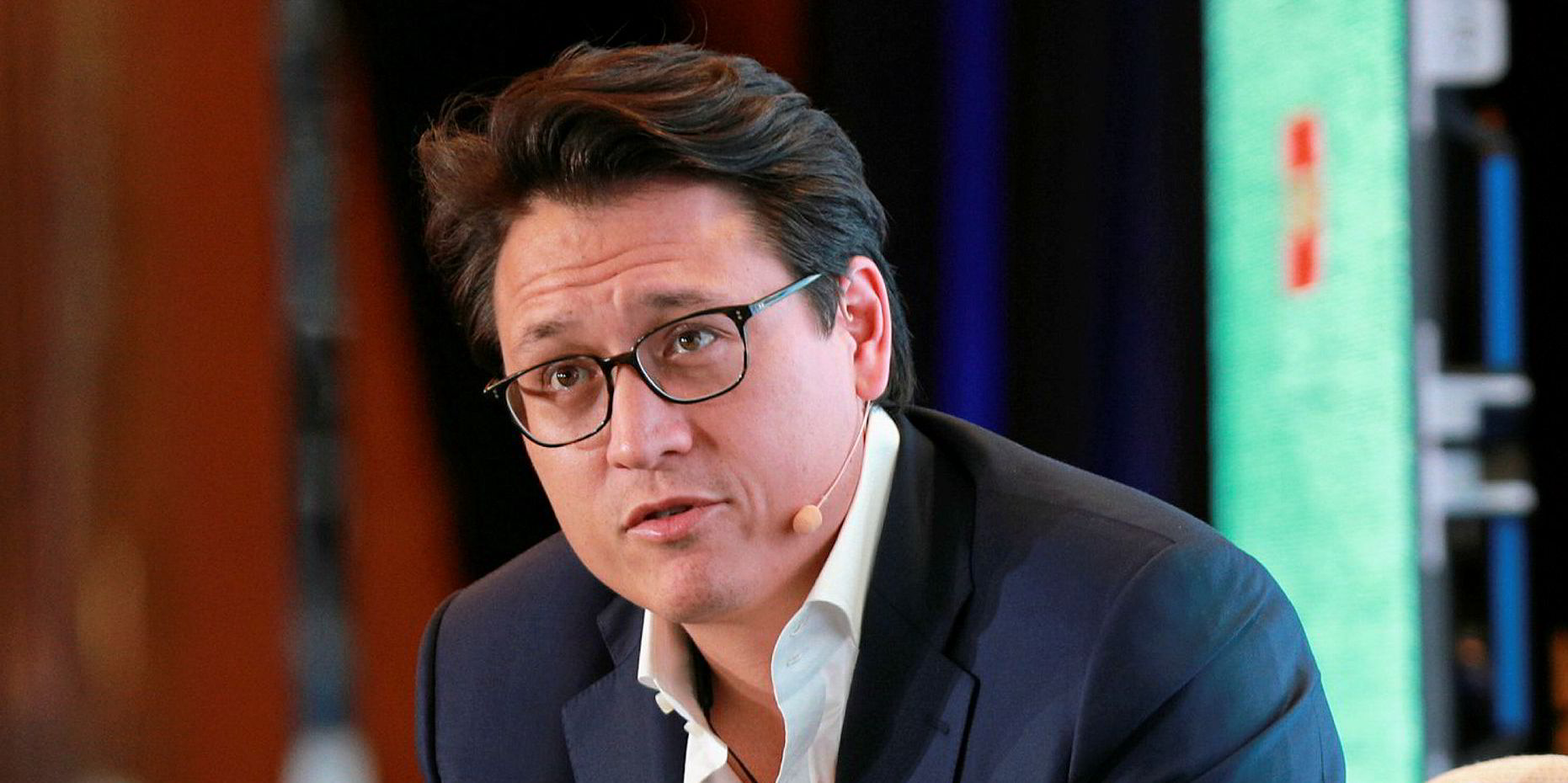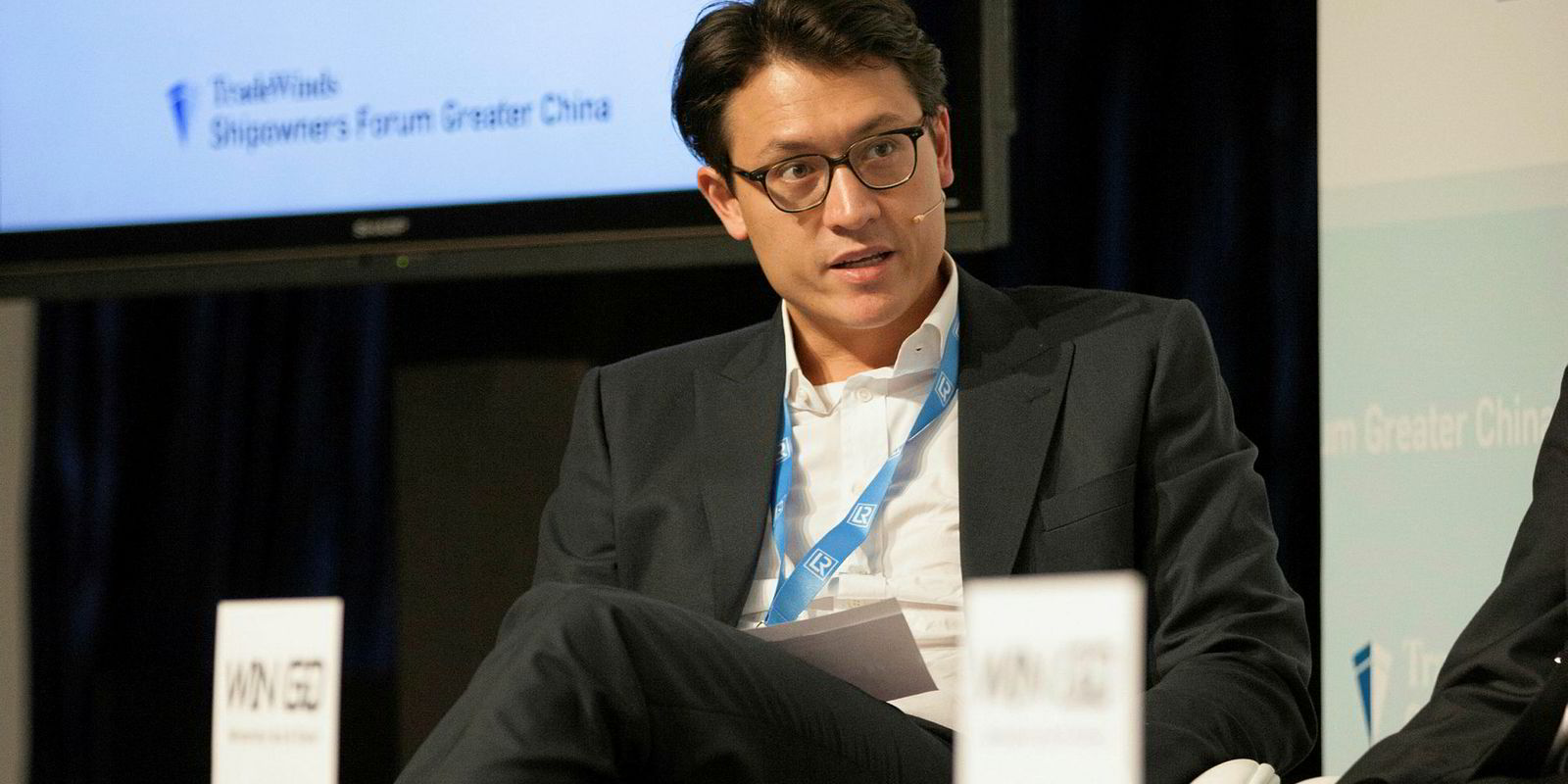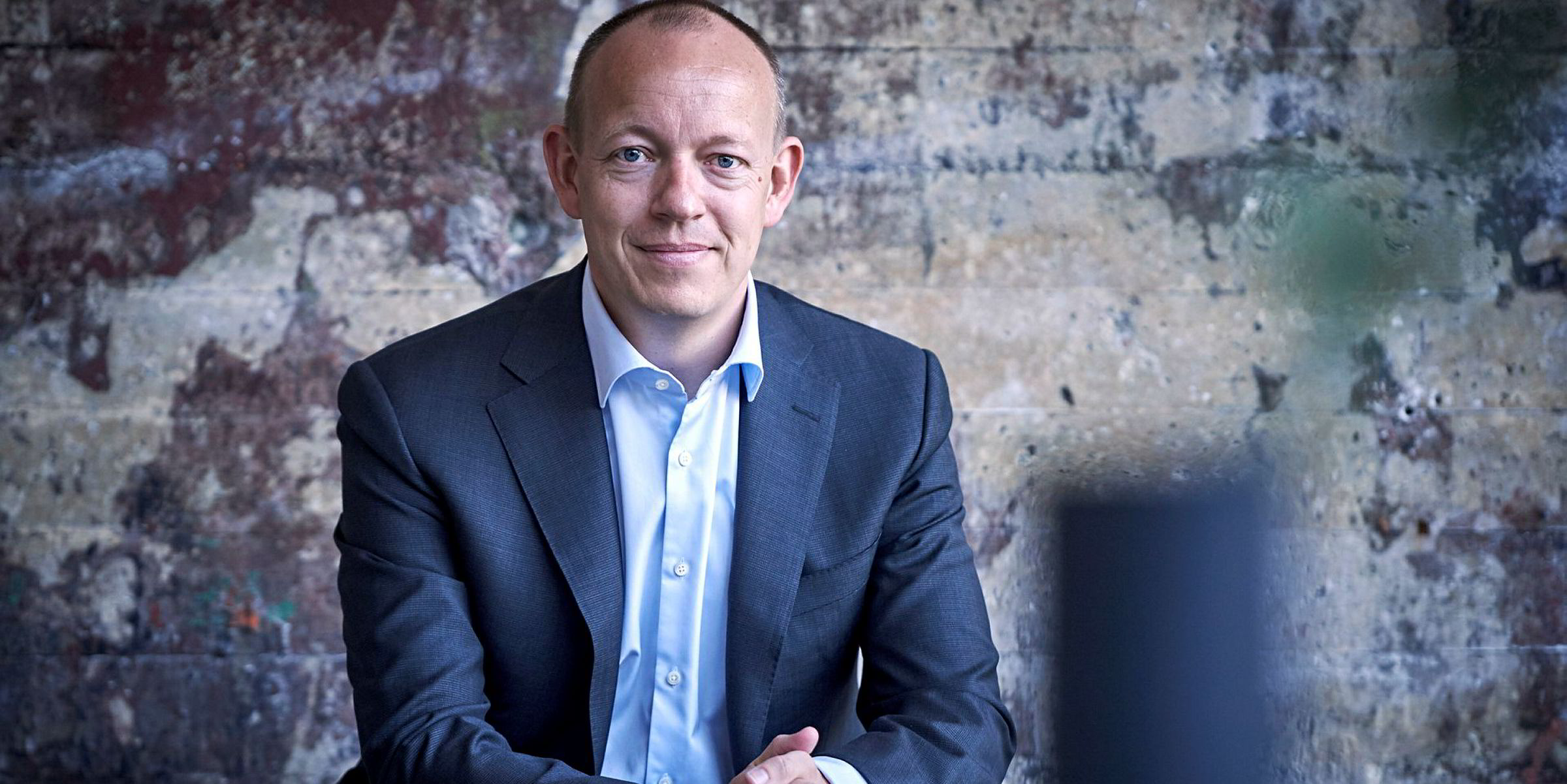Handysize bulker operator Taylor Maritime has risen at a meteoric pace since founder Edward Buttery bought his first ship in September 2014.
With a seemingly insatiable appetite for tonnage, the Hong Kong-based company has amassed a fleet of 28 vessels.
While Taylor Maritime tends to keep a relatively low profile, Buttery shared some insights into its business model on the sidelines at last week's TradeWinds Shipowners' Forum in Singapore.
He claimed to have a preference for secondhand ships rather than newbuildings.
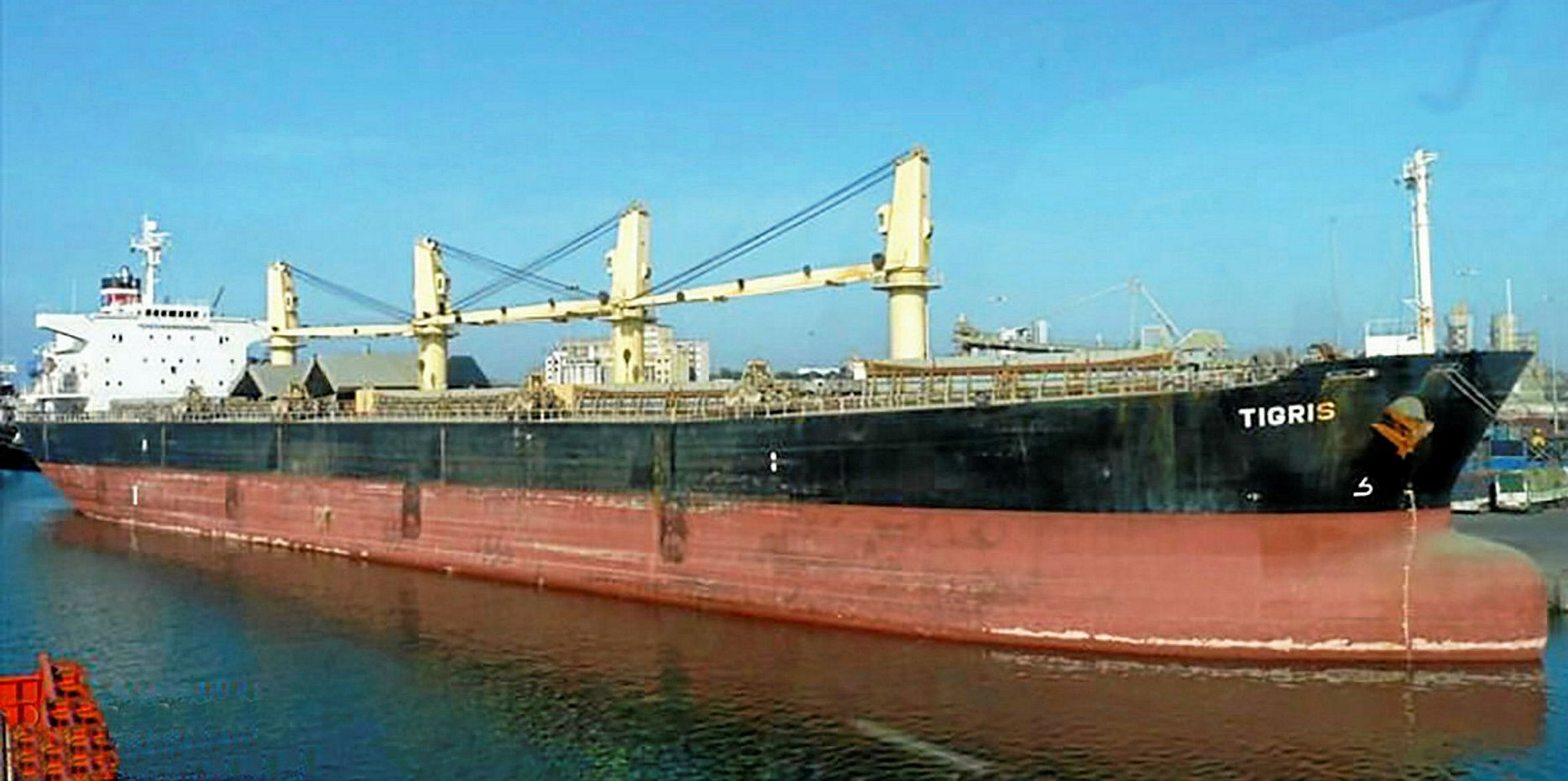
“I am not a believer in the cost of newbuildings today," he said. "I am a supporter of older, well-maintained ships built in the right yards.”
Taylor Maritime's fleet list shows Buttery is staying true to his word. All of the company’s ships were acquired secondhand and all were built at Japanese yards. They range in age from six to 17 years.
It is still possible to get double-digit returns on older ships provided you have the right team to keep them well maintained and operating efficiently
Edward Buttery
Double-digit returns
“It is still possible to get double-digit returns on older ships provided you have the right team to keep them well maintained and operating efficiently,” Buttery said.
Last year was especially busy for Taylor Maritime on the buying front. It bought 10 ships, paying a total of $90m, if reported prices are correct.
Buttery expressed an interest in acquiring more ships this year, but did not say what he was especially interested in despite the company’s surprise move into the supramax segment in December last year.
The purchase in question was Niovis Shipping’s 52,500-dwt Tigris (built 2003).
The ship, which was reportedly sold for $8m, was delivered to Taylor Maritime last month.
It was renamed Ella, which is somewhat dull in contrast to other ships in the fleet with the monikers Buckaroo Bowl, Feisty Karen, Fools Gold and Lovely Klara.
Buttery gave the impression that the Ella was almost bought on a whim.
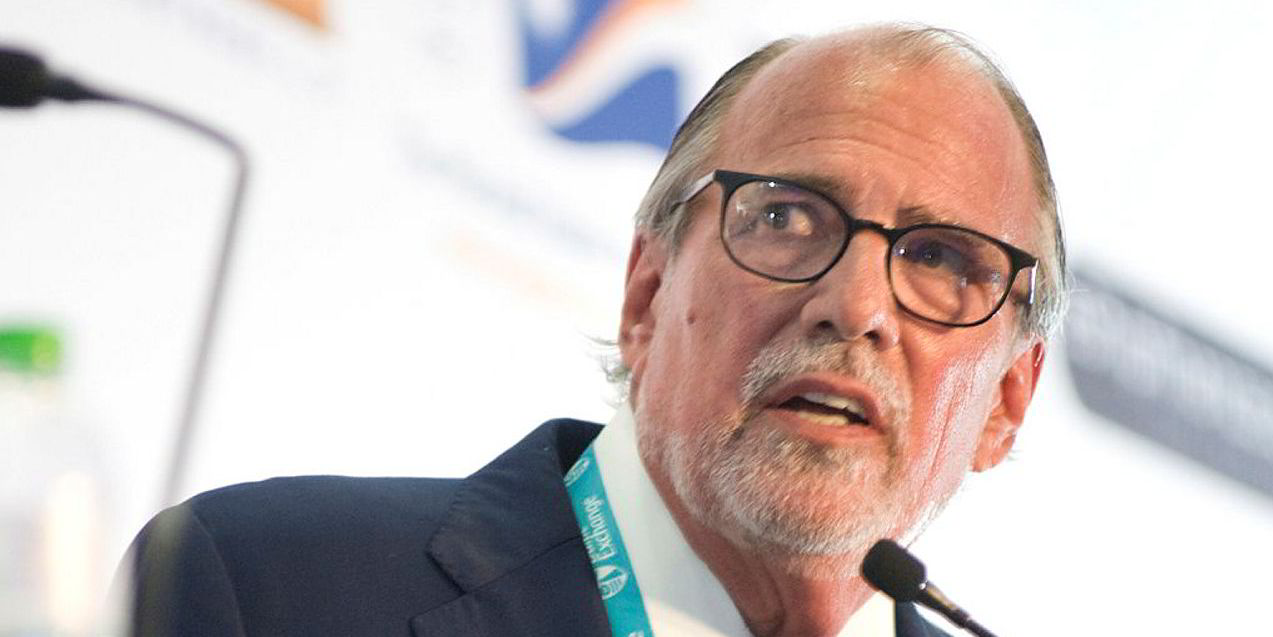
He said the deal materialised as a result of him having breakfast with Niovis' Basil Mavroleon in London.
Whatever the circumstances behind the purchase, he seemed pleased with his latest vessel.
“It is one of the best ships we have ever bought," Buttery said. "It is very well maintained.”
Whether that means Taylor Maritime aims to establish a strong presence in the supramax sector remains to be seen.
For now, Buttery maintains that the Ella was an opportunistic purchase — and any more supramaxes will be purchased on an individual basis.
“We won’t go out and buy a whole lot of them,” he said.
So far, Taylor Maritime has shown itself to be a dedicated operator with little interest in engaging in asset plays.
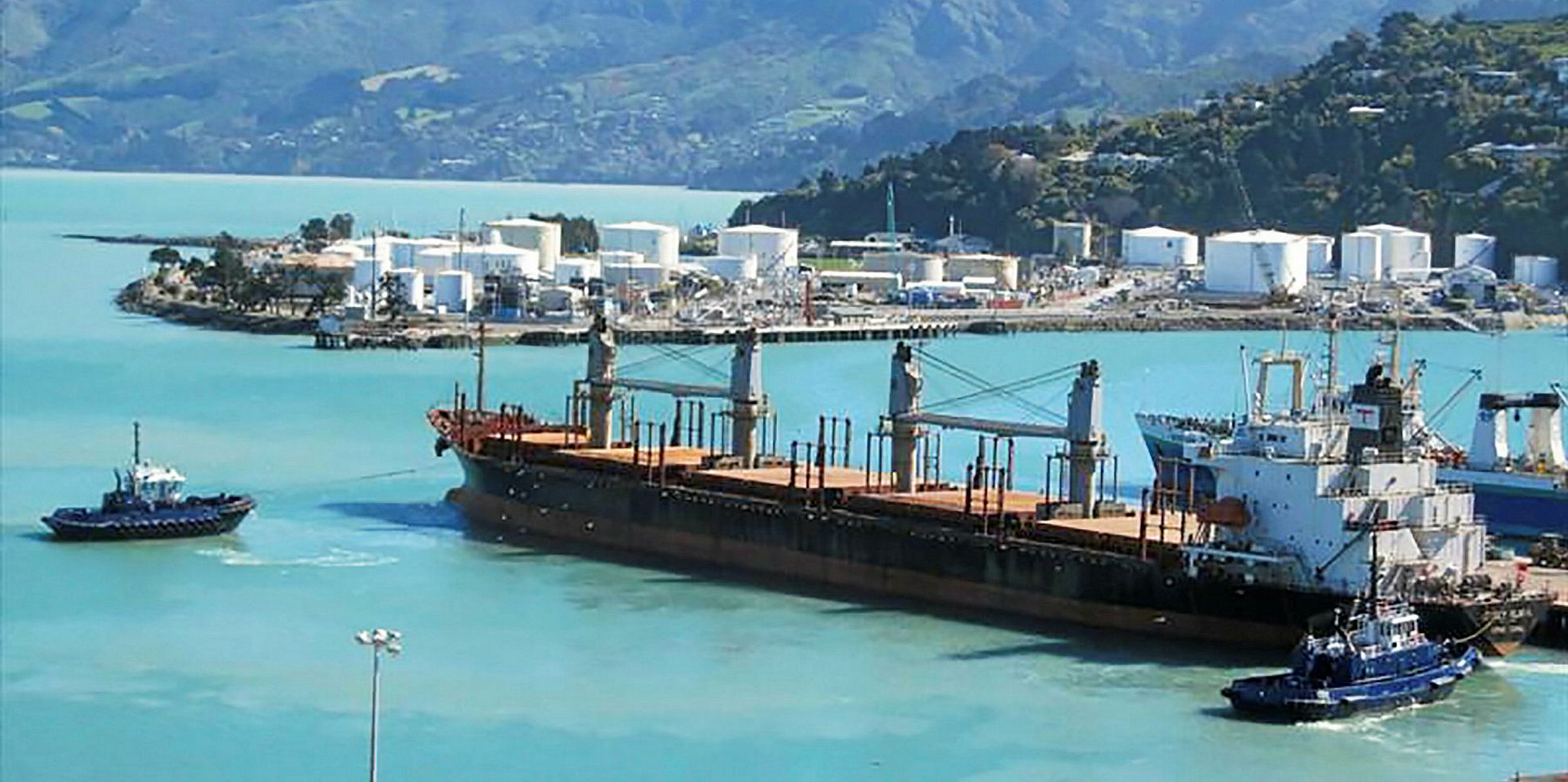
Handysize disruptors
While the handysize sector in which Taylor Maritime operates has been largely unaffected by the problems in the coal and iron-ore trades that have sent large bulker rates into free fall, Buttery noted the smaller sizes have their own challenges.
He described Taylor Maritime’s returns last year as being acceptably strong. However, he was less optimistic about any potential market windfall this year, describing it as being slow and steady.
“We are not expecting surprises on the upside,” he said.
On the downside, there is plenty to keep Buttery concerned.
In particular, he cited the swine flu outbreak in China, which has devastated its pig-farming industry.
After sweeping through South East Asia, the disease was officially recognised in China last August and, since then, it has spread throughout the country.
China has been culled about 50 million pigs since the outbreak.
The widespread culling continues, and some estimates suggest almost four in 10 pigs in China may be culled by the time its purge is complete. This would mean another 180 million pigs will be slaughtered.
The main food source for the Chinese pig-farming industry is imported soya meal, the bulk of which is shipped on handysize to supramax bulkers.
Last week, Norden chief executive Jan Rindbo told TradeWinds that swine flu in China posed a greater immediate threat to the dry cargo market than US President Donald Trump’s trade-war sabre-rattling.
Taylor Maritime will also be affected by the fallout.
“It is a big deal,” Buttery said. "It is having a bad effect on the soymeal market."
Negative sentiment is not necessarily a bad thing. The silver lining is that we are not seeing many new ships being added to the market
Edward Buttery
Nevertheless, he seemed somewhat unperturbed by a potentially soft market.
“Negative sentiment is not necessarily a bad thing," he said. "The silver lining is that we are not seeing many new ships being added to the market."
IMO 2020 compromises
Taylor Maritime, like many other operators of vessels in the smaller size segments, has opted to use low-sulphur fuel after the IMO 2020 rules take effect rather than fit its vessels with scrubbers.
“We have tested various chemicals and, so far, the results have been very good,” Buttery said.
He noted that there is a lack of willingness to fix vessels after 1 January 2020, but argued that there are good opportunities for charters to fix cheap ships beyond then.
Buttery revealed that Taylor Maritime is fixing vessels beyond the IMO 2020 deadline, although this requires some compromises from owners and charterers.
This, he claimed, was a surprisingly easy undertaking.
“For owners who are willing to make compromises to maintain good relationships with clients, you find your customers are also willing to make compromises," he said. “You have to meet each other in the middle.”
